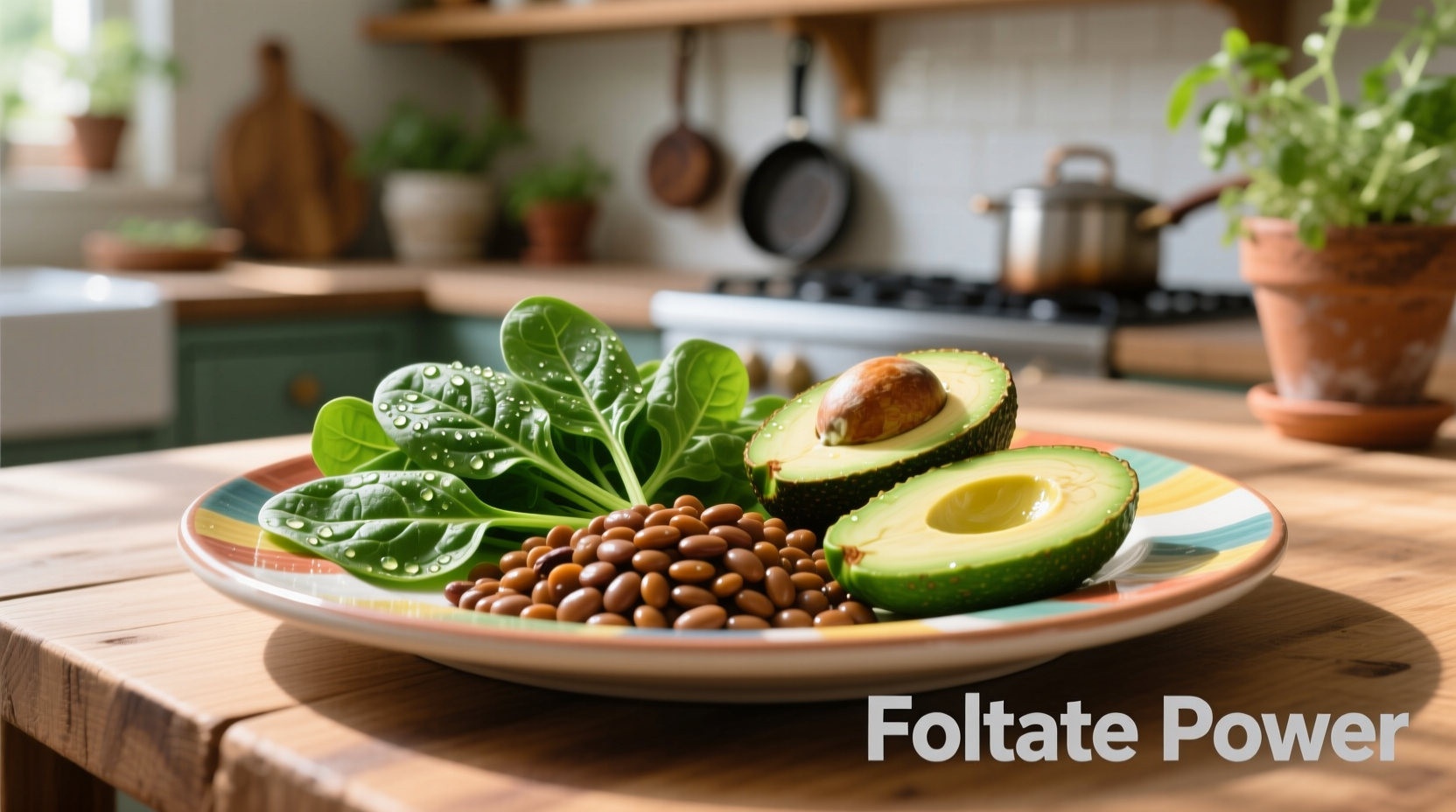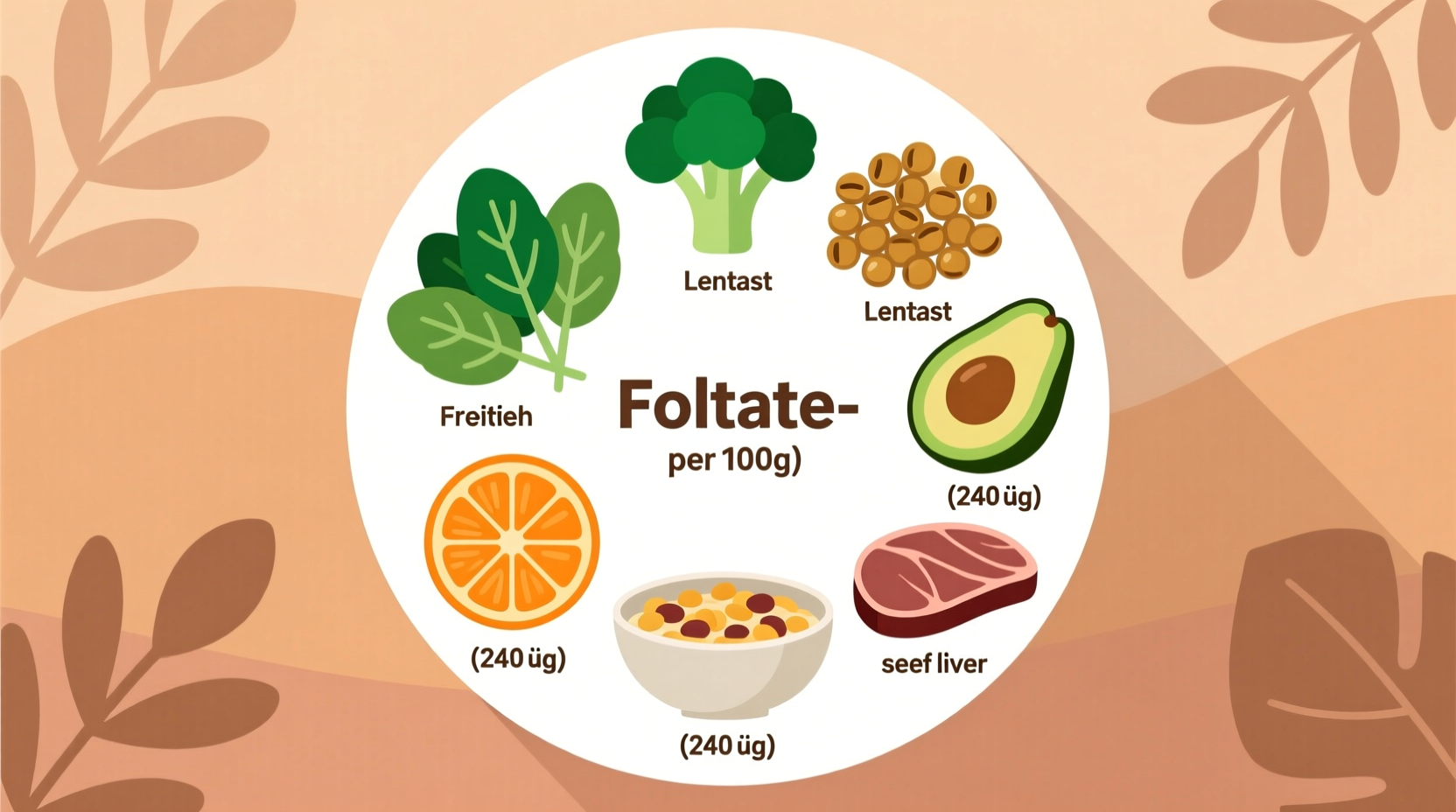When you're searching for what foods have folate, you need reliable, science-backed information you can trust. Folate, the natural form of vitamin B9, plays a critical role in DNA synthesis, red blood cell formation, and preventing neural tube defects during pregnancy. Unlike synthetic folic acid found in supplements, natural folate comes exclusively from food sources—and knowing which foods deliver the most can significantly impact your nutritional health.
Why Folate Matters More Than You Think
Folate isn't just for pregnant women. This essential nutrient supports cell division throughout your life, helps convert homocysteine to methionine (reducing heart disease risk), and maintains healthy brain function. The National Institutes of Health confirms that folate deficiency can cause megaloblastic anemia, fatigue, and impaired immune function. Adults require 400 mcg DFE (Dietary Folate Equivalents) daily, while pregnant women need 600 mcg DFE to prevent birth defects—a critical distinction many overlook when researching natural folate food sources.

Top Food Categories Packed With Natural Folate
Leafy Greens: Nature's Folate Powerhouses
Dark leafy greens consistently rank among the best dietary sources of folate. One cup of raw spinach provides 58 mcg DFE (15% DV), while the same amount cooked jumps to 131 mcg DFE (33% DV). This dramatic increase occurs because cooking reduces volume, allowing you to consume more nutrients per serving. According to USDA FoodData Central, other leafy greens like romaine lettuce (64 mcg per cup) and turnip greens (170 mcg per cup cooked) deliver substantial folate benefits.
Legumes: The Consistent Performers
Beans and lentils offer reliable folate content with excellent bioavailability. A ½ cup serving of cooked lentils delivers 179 mcg DFE (45% DV), while black-eyed peas provide 105 mcg DFE (26% DV). Chickpeas (80 mcg per ½ cup) and kidney beans (79 mcg) round out this protein-rich folate category. The USDA FoodData Central database confirms legumes maintain folate content well through cooking, making them dependable sources for folate-rich foods for vegetarians.
Cruciferous Vegetables: Beyond Just Folate
Broccoli, Brussels sprouts, and asparagus deliver impressive folate quantities alongside other vital nutrients. Four spears of cooked asparagus contain 89 mcg DFE (22% DV), while ½ cup cooked broccoli provides 84 mcg DFE (21% DV). These vegetables also contain compounds that enhance folate absorption—a synergistic benefit not found in fortified foods. For those researching what vegetables have folate, these cruciferous options provide the most nutritional bang for your buck.
| Food Source | Serving Size | Folate (mcg DFE) | % Daily Value |
|---|---|---|---|
| Beef liver | 3 oz | 215 | 54% |
| Lentils | ½ cup cooked | 179 | 45% |
| Spinach | ½ cup cooked | 131 | 33% |
| Black-eyed peas | ½ cup cooked | 105 | 26% |
| Asparagus | 4 spears cooked | 89 | 22% |
| Avocado | ½ fruit | 59 | 15% |
Maximizing Folate Absorption From Your Diet
Understanding how cooking affects folate content is crucial for optimizing intake. While water-soluble vitamins typically degrade with heat, folate in leafy greens actually becomes more bioavailable when cooked due to cell wall breakdown. However, prolonged boiling can leach folate into cooking water—steaming or quick sautéing preserves more nutrients. The CDC notes that fresh, frozen, and canned vegetables all provide valuable folate, though frozen options often retain more nutrients than fresh due to flash-freezing at peak ripeness.
For those following plant-based diets, pairing folate-rich foods with vitamin C sources enhances absorption. Try adding lemon juice to lentil soup or bell peppers to spinach salads. This practical tip addresses a common oversight when searching for best natural folate food combinations.
Special Considerations for Different Life Stages
Pregnant women need 50% more folate than other adults, making dietary sources critically important alongside supplements. The American College of Obstetricians and Gynecologists recommends obtaining folate from both food and supplements during pregnancy. For older adults, folate needs remain at 400 mcg DFE daily, but absorption decreases with age—making consistent consumption of high folate food portions essential for maintaining cognitive health.
Those with MTHFR gene variations process folate differently and may benefit from methylfolate-rich foods like asparagus and lentils rather than folic acid supplements. This genetic consideration represents an important context boundary often missing from basic what foods contain folate searches.
Practical Daily Folate Plan
Building a folate-rich day doesn't require drastic dietary changes. Start with avocado toast (118 mcg) for breakfast, add a spinach and chickpea salad (213 mcg) for lunch, snack on an orange (39 mcg), and enjoy lentil curry with asparagus (268 mcg) for dinner. This realistic meal plan delivers 638 mcg DFE—exceeding daily requirements without supplements. For those researching easy folate-rich meals, this approach demonstrates how small additions make significant differences.











 浙公网安备
33010002000092号
浙公网安备
33010002000092号 浙B2-20120091-4
浙B2-20120091-4